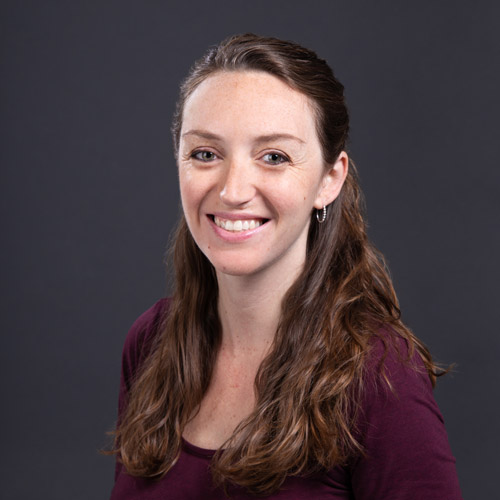Digging to 1641
Archaeologists explore continent’s oldest wood-frame house
In the slideshow above, learn about Travis Parno’s discoveries at the Fairbanks House. Photos by Travis Parno (GRS’11) and Amy Laskowski
When a team of archaeology students unearthed a glass bottle labeled "cocoaine," their first thought was that it had once held medicinal cocaine, which was widely used to relieve pain. But researching the merchant’s name, "Burnett," led archaeology grad student and lead researcher Travis Parno to believe that the light green bottle had been filled with coconut-based hair oil—and merely played off the name “cocoaine” to attract buyers.
The bottle was one of dozens of artifacts that Parno (GRS’11) and his team of volunteers uncovered at what is believed to be the oldest wood-frame home in North America, the Fairbanks House, in Dedham, Mass.
“Every field season is a brand-new learning experience, both for me and for the students involved,” says Parno. “No amount of classroom time can compare to being in the field, seeing the material remains of the past emerge in front of your eyes.”
The house was built by the Fairbanks family about 1641, a date calculated by counting the tree rings of the timber beams in the house. It remained in the family for eight generations, until the last Fairbanks descendant moved out in 1904. Today it is a museum, owned by the Fairbanks Family Association, and is listed on the National Register of Historic Places.
BU’s involvement with the site began in the 1970s, when archaeology students conducted some minor excavations, but failed to find any artifacts of note. Then last year, when the Fairbanks Family Association made plans to expand the driveway, Parno was asked by the museum’s curator, whom he had met on a dig in Bermuda, to inspect the area for historical artifacts.
Parno, who applied the work to his PhD dissertation, expanded the dig to include the site of an old shed, and a possible cellar, both discovered by BU archaeology student Christopher Dayton (GRS’08) in 2003. Parno worked with PhD student Alex Keim (CAS’04, GRS’11), his advisor, Mary Beaudry, a College of Arts & Sciences archaeology professor and director of graduate studies, and a team of other volunteers from around Boston.
Parno and the group found a few places where large stones protruded above the ground. “If you kind of crossed your eyes enough, they made a line,” he says. “So we dug in that area to see if they represented some sort of foundation line.” The team expected to find some sort of outbuilding, such as a dairy or a buttery.
“We kept expecting the foundation line to end,” says Parno. “But it kept going and going. It ended up with this building being much larger than we had envisioned.”
When the dimensions of the building emerged—almost 28 feet by 32 feet—it became clear that it was too large to be a kitchen or a buttery, and the group determined it had to have been a barn. Based on artifacts—plates, bottles, scissors, a necklace, stoneware, a suspender buckle, buttons, pipes, and more—found above and below the barn floor, the team was able to date the structure from between 1780 and 1800 to between about 1850 and 1860.
Parno believes the Fairbanks family used the excavated area to bury trash after the barn was razed. In addition to the artifacts, they found trash, ash, and fire remains. “It was common in those days to dump your trash,” he says. “You didn’t really have anywhere to put it other than your yard or bury it somewhere. So when you have the foundation of a building that you’re no longer using, just a big hole in the ground that needs filling, you would throw your trash into it.”
Now that the actual dig has ended, Parno’s work is just beginning. There are “bags and bags of dirty artifacts that have to be washed and labeled,” he says. There are also the cataloging and conclusions to be drawn from the findings, all part of his archaeological analysis. “We’re trying to determine what these artifacts can tell us about the generations of people that lived in the house,” he says.
Parno hopes that his excavations, the first sizable dig outside of the walls of the 1641 house, will reveal much about the day-to-day lives of the Fairbanks House occupants. “So often people respond to historical archaeology by saying, ‘Oh, I find stuff like that in my yard all the time; what’s the big deal?’ But it’s not the stuff that’s important; it’s the ability to link the stuff with the people who lived before us,” he says. “That’s when we can learn something about the nuanced behaviors of a particular family or individual, things that can’t be found in textbooks.”
The Fairbanks House is open to the public from May to October; learn more, including about tours, admission, and hours, here. Read Parno’s blog about the dig and the findings here.
Kimberly Cornuelle contributed to this story.
Amy Laskowski can be reached at amlaskow@bu.edu; follow her on Twitter @amlaskow.

Comments & Discussion
Boston University moderates comments to facilitate an informed, substantive, civil conversation. Abusive, profane, self-promotional, misleading, incoherent or off-topic comments will be rejected. Moderators are staffed during regular business hours (EST) and can only accept comments written in English. Statistics or facts must include a citation or a link to the citation.